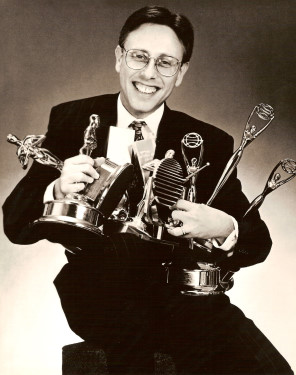|
Auditions Online: How To Win
More From Your Home Studio
By Marc Cashman  Auditioning protocol is changing, now that home studios are becoming ubiquitous. Auditioning protocol is changing, now that home studios are becoming ubiquitous. When you go to a casting company or your agent, youíll have two to three takes and then youíre done. In your home studio, though, you can do as many takes as you want until you feel youíve nailed it.
But thereís no one to direct you at home. Auditioning there is a totally self-directed exercise, with no feedback.
So here are a few things to keep in mind and a number of things to do to prepare yourself, both physically and emotionally, for this process.
WARM UP, PLAN, REHEARSE
Warm up your voice before you record. Do whatever vocalization exercises you need to do before you enter the booth. If you have a number of different auditions to record, first record the ones that are on the low end of the scale, i.e., the deepest ones. Your voice is most resonant first thing in the morning, because you havenít been talking for six to eight hours. Then proceed to the scripts in a higher key, and finally to any scripts that require a louder sound, or, say, a textured voice or gritty character.
As with any audition, go over directions, mark, rehearse and time your copy before you record.
Rehearse your copy standing up and speaking at the volume youíll be voicing in the booth. If the spot requires a lot of energy, read standing up. But if the spot asks for a relaxed, laid-back read, consider sitting on a stool.
Have water in the booth at all times, and drink in between takes. Stay hydrated.
DID YOUR BEST?
Listen to your playback objectively. Do you believe the person youíre hearing? Be honest. If not, record it again. And again, if necessary. If you capture a convincing performance, send it on. If not, pass on it. It means youíre just not ďgetting it.Ē Donít worry, though. Thereíll be plenty of others down the road.
If you havenít been given the proper pronunciation of the product or service, try looking it up online to see (or hear) how the name is pronounced. If you still donít know, take your best guess.
Add your personality and individual ďspin.Ē
FOLLOW DIRECTIONS
Read directions carefully, and give the client at least one take the way they want it. Then give a second take the way you think it should be.
If itís a 60-second script, submit one take. If itís a 30-second, submit two. If itís a 10- or 15-second spot, submit three. If itís an animation audition, decide on your characterís voice and commit to it.
Slate your name clearly, and follow slating instructions carefully. You donít need to give your life story. Keep the slate short and sweet, and get right to it. Follow any labeling protocol to the letter. Be especially cognizant of details like upper and lower case, spacing, underscoring, hyphens, etc.
If there are no labeling instructions, ask your agent if thereís any particular way theyíd like the file labeled. If not, label your files generically: YourName-Product.mp3. Some agents or clients will not even listen to or consider mislabeled auditions, on the assumption that anyone who canít follow simple written directions wonít be able to follow oral ones in a session.
RECORDING SPECS
Record your auditions at 128 kpbs (or 96 kpbs if itís a particularly long audition), in mono. You donít need a stereo file for an audition, and you want to limit the size of the file youíre emailing. If the file is really big, arrange to upload it instead of trying to attach it to an email. Youíll know if the fileís too big when it bounces back with a ďcannot be deliveredĒ message.
Check, double-check and triple-check your recording settings. Make sure your recording is like Goldilocks: not too soft, not too loud (no distortion), but just right.
SOUND OK?
Send a sample recording to some audiophile (read: techno geek) friends and ask them if your sound file sounds okay. If not, get your recording system tweaked before you send out any more funky-sounding auditions. Make sure youíre recording in a dead-sounding space, where the sound isnít bouncing off hardwood floors or high ceilings.
You can do a lot to dampen the sound around your mic. Many times, if you have some basic soundproofing, your auditions will sound great, and can be used as a final track.
COVER IT
For auditions going to agents, a cover letter isnít necessary. But you should always attach one to every audition that goes directly to a client. It should include:
If they want you to submit a quote for your services, be as explicit as possible - given the job description - and address any ancillary costs such as studio time, phone-patch or ISDN charges, etc.
Marc Cashman heads Cashman Commercials, Stevenson Ranch, CA - one of the top radio production companies in the U.S. - winning over 150 advertising awards in the past 20 years, writing and producing copy and music for radio and TV commercials. He is also a voice-over instructor, offering beginner and master classes.
Email: cashcomm@earthlink.net
|
Tell Us What YOU Think!
Please Note: Since we check for spam, there will be a slight delay in the actual posting of your comment.
Comments
No comments have been posted yet. Hurry, and you could be the first!








.png)
click for new article alerts